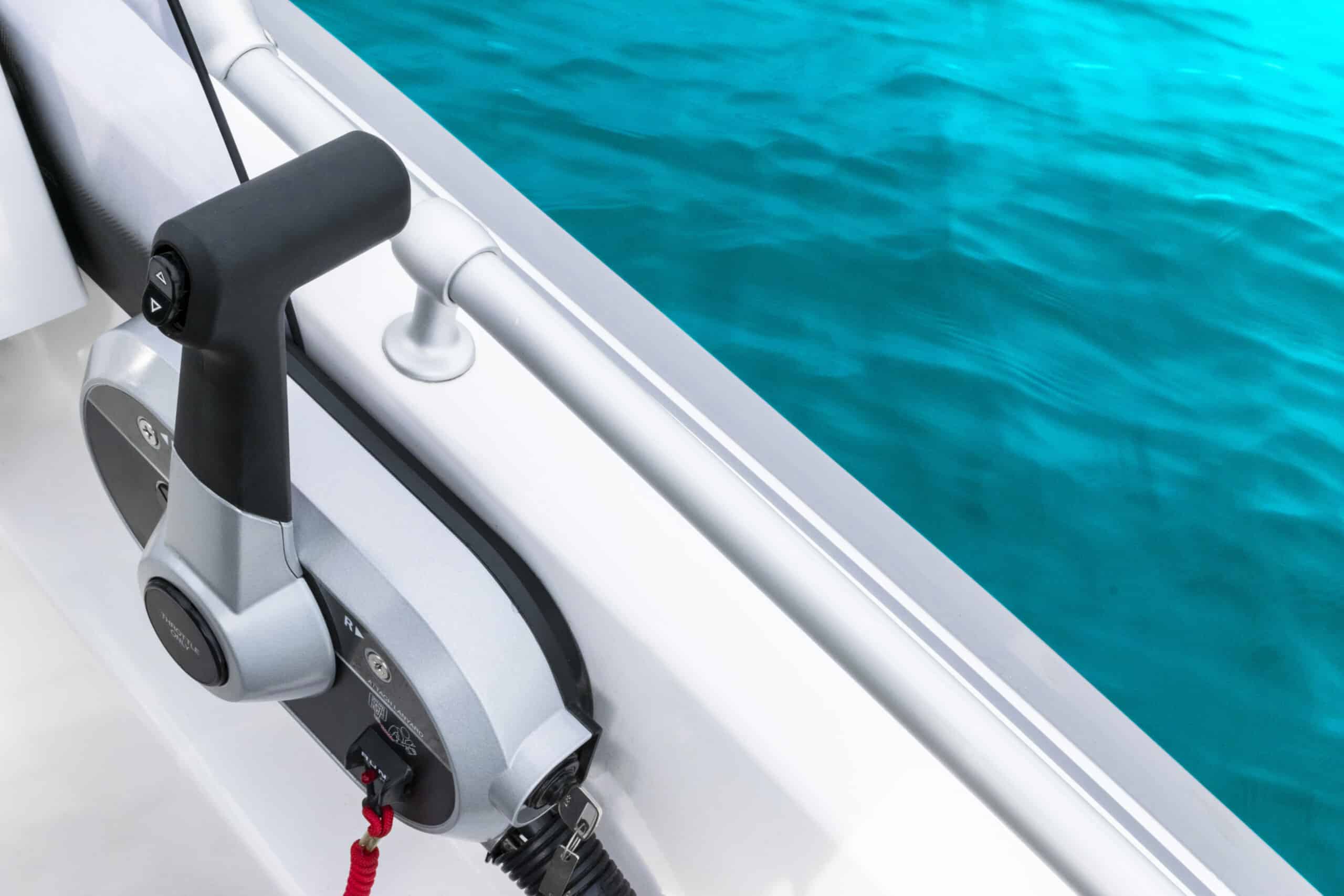What Piece of Equipment on a Boat is Most Important in Preventing Propeller Strike Injuries?

Propeller injuries are one of the more serious types of boating accidents. Preventing propeller strikes is a vital part of boating safety.
There is a small device at the boat console that can literally save someone’s life and even prevent propeller strike injuries from happening. Every boater needs to be aware of this kill switch as it may be the difference between life and death.
The ignition safety switch, often known as the engine cut-off switch, is the most critical piece of equipment for preventing propeller strike injuries. The purpose of this device is to turn off the boat engine immediately so the propeller will be halted and an accident can be avoided.
What is Propeller Strike?
Propeller strike accidents or prop strike occurs when a boat’s propeller comes into contact with a person in the water. This usually results in serious injury, and in severe cases, even be fatal.
A boat’s propeller is not visible to the passengers, operators, swimmers, or skiers since it functions beneath the water. As a result, when it comes into touch with an invisible item such as heavy, long grasses or any swimmers or divers, there is a risk of propeller impact.
Propeller incidents most often occur when people are enjoying water sports such as tubing, water skiing, or wakeboarding. Swimming off the back of the boat is also a common cause.
Preventing Propeller Injuries
While propeller accidents are dangerous, the majority of propeller accidents may be avoided. The following measures should be followed to avoid a propeller hit accident:
- Before starting the engine, double-check that everyone is safely out of the water.
- Never climb on the outboard motor to get out of the water
- Appoint a spotter to assist you in keeping an eye out for persons in the water.
- Assign a responsible person to keep an eye on the kids in the boat to avoid falling in.
- When approaching a congested location or anchorage, reduce your boat’s speed. Always keep in mind that crowded places are equally densely populated with swimmers and divers.
- Familiarize yourself with the red flag with a white diagonally stripe, which denotes the presence of divers underwater.
- Inform the passengers of the propeller’s location and potential hazards.
Safety Equipment for Propellers
There are some safety devices and equipment available to prevent propeller injuries. Some of these are meant to only work with motorboats and not sailboats.
Wrist lanyard
The boat operator wears this device, which shuts off the engine immediately if they go overboard.
Wireless cutoff switches and anti-feedback steering are some of the other technologies.
Propeller Guards (Propeller Cages)
These are small cages that enclose around the propeller, preventing it from causing damage to someone. These can not be used for high-speed boats like bass boats or ski boats but may be a great option for pontoons.
Propeller Covers
While these don’t provide safety with a running engine, they are useful to keep the prop safe when it is out of the water.
Interlocking Ladders
Interlocking is a technology that connects the ladder and the swim platform to the engine to signal a cut-off if the ladder is in use. I don’t find this particularly great option, as most propeller accidents happen when someone is in the water, not on the ladder.
Electronic Sensors
If the sensors identify that a human has entered the water, it can alert and cut off the engine electrically. This is a handy piece of safety equipment, but please still exercise caution.
What To Do If a Propeller Strike Occurs
A typical recreational propeller has the potential to injure a person’s entire body in a split second.
To begin, you must comprehend why propeller impacts are so deadly. When a three-blade propeller spins at 3,200 rpm, it may take 160 hits in a second.
I would strongly recommend a sturdy propeller cage in addition to the excellent recommendations regarding situational awareness and a skilled operator. I’ve never seen one on an outboard engine, but they’re simple to make and install on conventional shafted propellers. Some rudder designs need the use of a cage, and some rudders are cages, resulting in a ducted effect. More safety against prop injuries is provided if the fixed cell is extended to the hull with a mesh, letting water into the prop. It also protects the prop from nets and deadheads.
Conclusion
Always keep in mind that the propeller is a potentially harmful piece of equipment for swimmers, divers, and athletes. Props are pieces of underwater gear that rotate fast and propel your boat through the water. As a result, coming into touch with a propeller can be hazardous and even fatal in some cases.
The operator must use the ignition safety switch lanyard to avoid mishaps caused by propeller strikes. The lanyard is attached to the safety switch and secured to the operator’s wrist.
If the operator falls from the boat, the lanyard is ripped from the switch, and the engine shuts off immediately. As a result, the simplest way to avoid being struck by a propeller is to wear an activation safety switch lanyard.
On the majority of powerboats and personal watercraft, this safety switch lanyard is standard. Even though it is not required by law, many lives can be saved if the operator wears a lanyard.
This article may contain affiliate links which I earn a commision through when you purchase. As an Amazon Associate I earn from qualifying purchases.
Please read why I do this and my commitment to accurate and compelling content.


